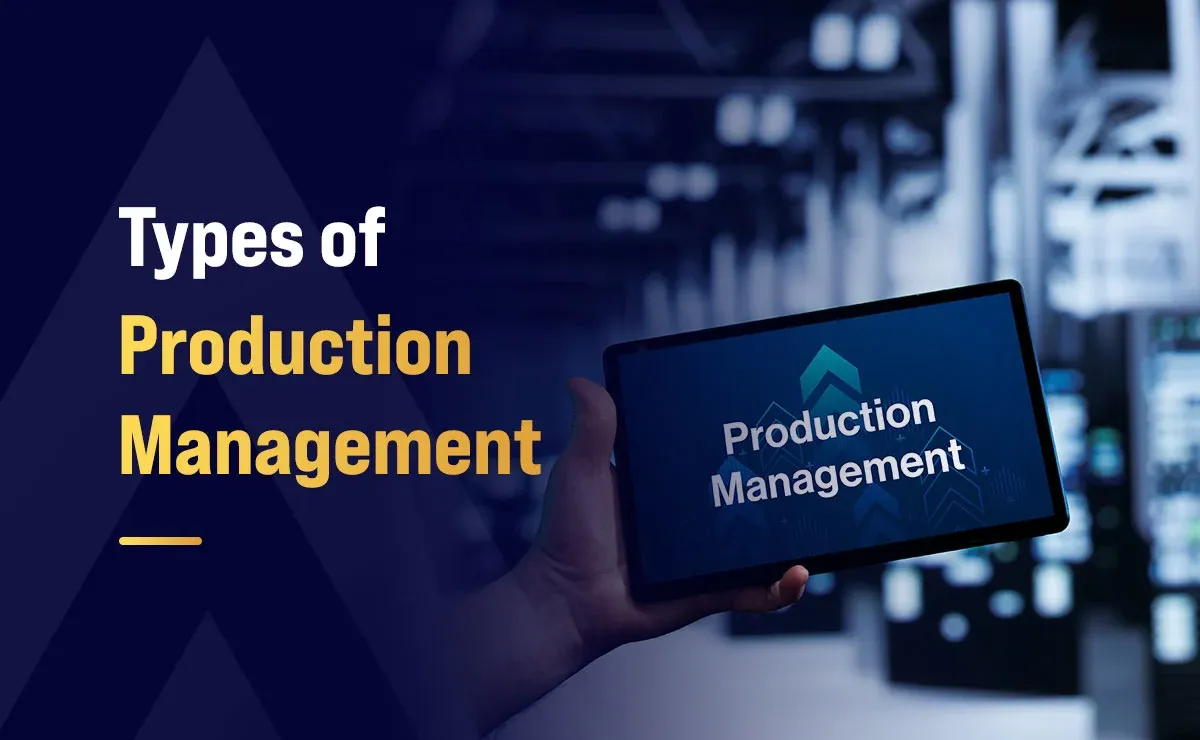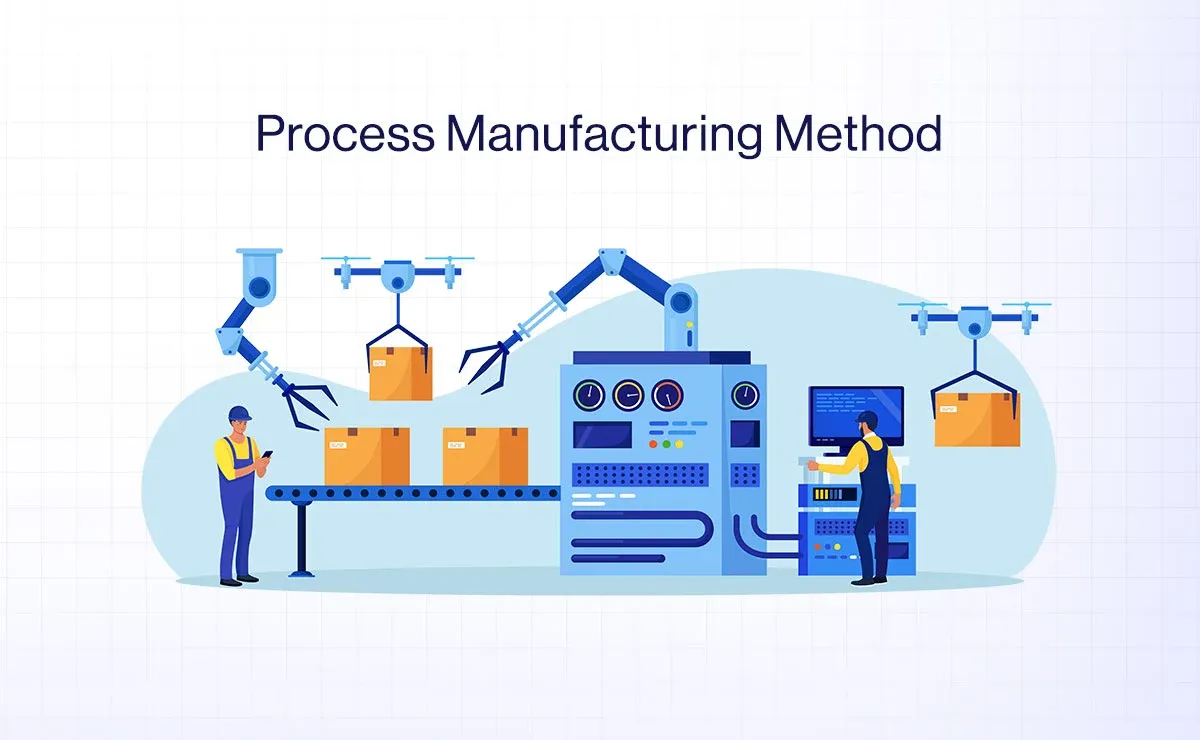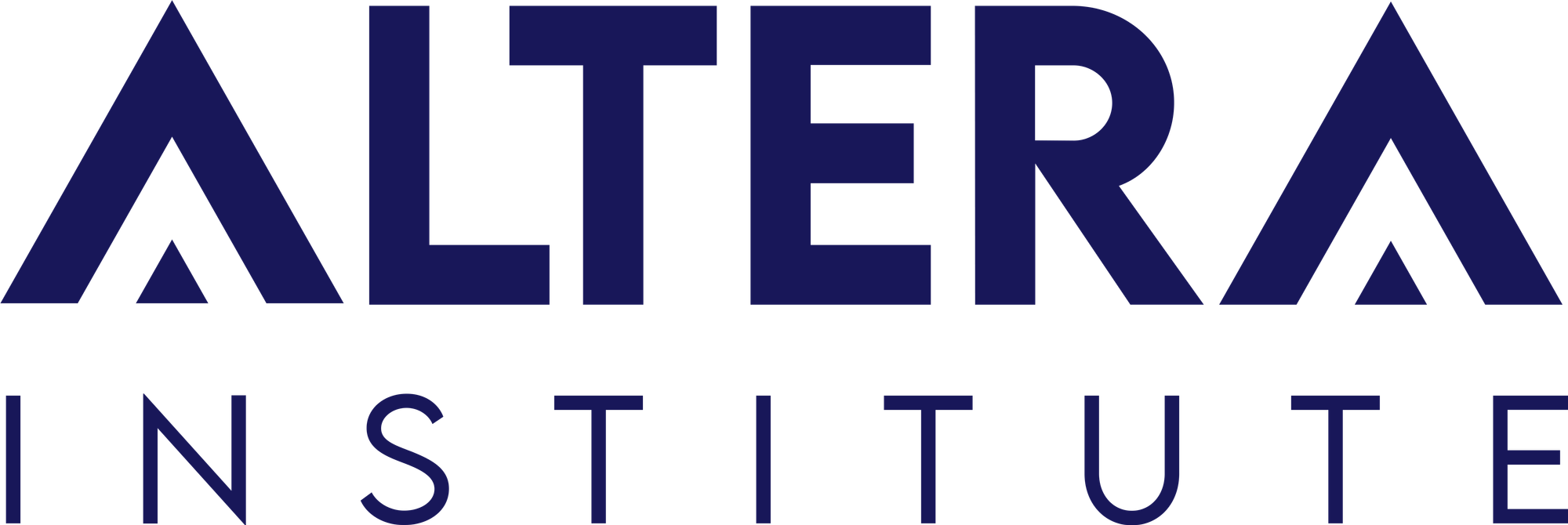Types of Production Management

The management of production plays a crucial role in transforming raw materials into finished products with the utmost efficiency and effectiveness. It entails the strategic management, implementation, and monitoring of the production process to ensure quality, cost-effectiveness, and timely delivery. Although the terms "operations management" and "production management" are frequently used interchangeably, the latter focuses particularly on manufacturing.
Depending on the type of production, there are various forms of production management, such as job, batch, and mass production, that demand certain planning and control methods. At the Altera institute, students will be given direct exposure to the implementation of these techniques and will acquire skills that positively impact their readiness and career placement. Determine how our programs equip you with production management positions in the real world.
To achieve optimal production, businesses employ various production management practices tailored to the specific product, market demand, and resource availability. This article explores the various types of production management, their significance, key features, and practical applications.
What are the Different types of Production management
1. Process-Based Manufacturing

Process manufacturing is an extremely organized manufacturing process in which raw materials are subjected to a series of chemical, mechanical, or biological processing to produce a finished product. Process manufacturing, unlike discrete manufacturing, does not allow the reuse of individual components, as those components can be assembled and disassembled; however, once the transformation is made, the goods cannot be reused as their constituent parts.
This method is commonly used in industries that require precise formulations, consistency, and large-scale production. It can be executed as either continuous production, where manufacturing runs non-stop, or batch production, where materials are processed in fixed quantities.
Key Characteristics:
- It can operate as a continuous or batch-based production system.
- Generally, it utilizes advanced machinery and precisely controlled conditions.
- Ideally suited to industries that require high consistency and quality.
Common Applications:
- Pharmaceuticals: These are drugs, vaccines, and other medical preparations used in medicine.
- Food and Beverage: It is applied in the production of soft drinks, dairy products, packaged foods, and canned foods.
- Chemicals & Plastics: Necessary to produce fertilizers, detergents, synthetic materials, and industrial chemicals.
2. Schedule Management
Schedule management is concerned with planning, coordinating, and optimizing the manufacturing schedule to facilitate smooth and efficient production. It entails the development of realistic schedules, the efficient use of resources, and the appropriate reassessments necessary to handle unexpected obstacles like a breakdown of equipment, a disruption of supply chain management, or labor shortages.
Using a systematic scheduling method will enable companies to minimize idle time, increase production, and meet orders on time. Good schedule management can not only increase workflow efficiency but also save money by preventing delays, production overloads, and resource waste.
Key Characteristics:
- Automates work processes to maximize efficiency and reduce delays in production.
- Needs a smooth integration of teams, equipment, and material supplies.
- Optimizes resource utilization, resulting in cheaper production.
Common Applications:
- Automobile Production: Oversaw the assembly of vehicle components.
- Construction Projects: Manages the supply of materials and the workers' schedule to finish the project on time.
- Retail and E-commerce: It takes care of the stock and restock in order to respond to the demand of the consumers.
3. Flow Management
Flow management is a strategy that guides and streamlines the flow of materials, components, work-in-progress, and finished products through the production-to-distribution process. It makes sure that every activity associated with the production or delivery of a product is well synchronized to reduce inefficiency and increase productivity.
In a manufacturing facility, flow refers to the sequential steps that products undergo during the fabrication process. All products that undergo the same production steps are processed in a single unified flow. However, when various products are to be processed differently, numerous production flows are required. Such flows are also referred to as value streams, and it is these streams that dictate the efficiency of the raw materials turned into finished goods and delivered to the consumer.
Key Characteristics:
- Assures a sustained flow of work-in-progress inventories to efficient production.
- Brings in automation and lean production to improve productivity.
- Minimizes storage needs and reduces idle time between production stages.
Common Applications:
- Textile Industry: Oversees seamless transitions from fabric weaving to dyeing and stitching.
- Electronics Manufacturing: Ensures seamless operations in the assembly of circuit boards and the integration of parts.
- Food Processing: It makes movement easy through sorting, cutting, packaging, and distributing.
4. Batch Production
Batch production is a manufacturing process in which a specific quantity of identical products is produced simultaneously before moving on to the next batch. Unlike continuous production, where items are made in an ongoing process, batch production allows manufacturers to control the size, frequency, and specifications of each batch based on demand, customer preferences, or production requirements.
Every batch undergoes a predefined sequence of production phases, and the next cannot commence until the previous one is finished. This guarantees the organization of workflow and the ability to make changes and quality control across batches.
Key Characteristics:
- Manufacturing is carried out in predetermined batch sizes.
- Equipment and machinery can be adjusted to accommodate different products.
- Best suited for industries with fluctuating demand that require customized products.
Common Applications:
- Bakeries: Production of different flavors of cakes in batch production.
- Textile Manufacturing: Dyeing clothes in various colors according to demand.
- Pharmaceuticals: The production of medicines of a given quantity depends on the demand in the market.
5. Job Production
Job production is a manufacturing method in which products are created individually to meet specific customer requirements. Each order is unique, and production begins only after an order is placed. This approach is commonly used in custom-built homes, artwork, aerospace manufacturing, and tailored services.
It involves well-trained professionals or special teams and is therefore a time-consuming but very fruitful process. Although job production provides high-quality, customized products, it requires more effort, resources, and time than mass production. Such customized, tailored solutions are sold at a high price by companies.
Key Characteristics:
- Its products are highly customized and designed with the specific needs of its clients.
- It requires expert labor and tedious machinery.
- Each project is distinct and does not repeat any previous work.
Common Applications:
- Luxury Jewelry: Custom-designed and crafted jewelry to match customer tastes.
- Construction Industry: Building tailor-made houses, bridges, or vessels according to specifications.
- Printing Press: This operates the printing of books to order, as well as custom-designed invitations and artistic prints.
6. Continuous Production
Continuous production is a highly automated production process that operates continuously, producing large quantities of the same or similar products. The best application of this method is in industries that require accuracy and consistency, e.g., food, pharmaceutical, and chemical production.
The processes are round-the-clock, with minimal human intervention, which helps maintain a smooth flow of operations and ensures consistent product standards. Since it does not allow product variation, continuous production is most suitable for bulk production, where demand remains constant. Its automated nature and high productivity make it economical for mass manufacturing.
Key Characteristics:
- Operate constantly with few disruptions to increase efficiency.
- Needs significant investment in automated systems and technology infrastructure.
- Best suited for industries that produce continuous, high-volume, standardized products.
Common Applications:
- Petrochemical Industry: This involves refining crude oil into gasoline, lubricants, and other commodities.
- Cement Production: It operates 24/7 so that it can produce large quantities of cement that is utilized in huge construction projects.
- Steel Industry: It involves the processing of raw materials into steel sheets, steel bars, and other structural components.
7. Batch Flow
Batch flow is a system in which goods are produced in predefined groups, rather than continuously or individually. Each batch moves through each stage of production together, meaning a new batch cannot start a stage until the previous one is complete.
This enables the customization of batches, such as increasing / decreasing size, color, or design, and is therefore well-suited to small to medium-sized manufacturers. It also enables quality checks at every level and produces high standards of products, as well as efficient machine utilization.
Key Characteristics:
- Offers a middle ground between adaptability and operational effectiveness.
- It can be customized and still produced on a large scale.
- Allows the flow of batches to move through various phases without delays.
Common Applications:
- Pharmaceuticals: Production of different types of drug formulations in controlled production cycles.
- Consumer Goods: Making products that people need in their homes, such as laundry and care products.
- Medical Equipment: The production of syringes, test kits, and surgical equipment.
8. Process Flow
Process flow refers to the structured sequence of steps a product follows from its initial concept to final delivery. It encompasses idea generation, development, production, marketing, sales, and after-sales service. Each stage is interconnected, meaning disruptions in one phase can impact the entire system.
Optimized process flow management results in continuous work processes, improved resource planning, and punctual deliveries. Monitoring and optimizing every stage can help firms to be more productive, minimize expenses, and maximize client satisfaction.
Key Characteristics:
- Follows a standard order of operations that involves homogeneous production.
- Guarantees the standardization of product quality.
- Employs automated processes to raise production with low human interaction.
Common Applications:
- Paper Industry: Paper products are finished products manufactured by continuous processing out of raw pulp.
- Sugar Refineries: Refining sugarcane into granulated sugar using a systematic flow.
- Automobile Manufacturing: The process of assembling automobile parts in a systematic manner.
9. Job Shop
Job shop manufacturing is a flexible production system suited to small batches and customized orders. It is ideal when the company manufactures unique and made-to-order (MTO) items in small batches, which allows for high flexibility and customization. Compared to mass production, job shops make use of general-purpose machines to process diverse tasks and workflows.
The process prioritizes job scheduling, specialized routing, and just-in-time (JIT) workflows to enhance efficiency, reduce waste, and meet customer-specific requirements with precision and adaptability.
Key Characteristics:
- Best in the production of various, custom-made products in small quantities.
- Workstations are organized by specific functions rather than in a linear process.
- Needs very skilled labor in order to suit different project management needs.
Common Applications:
- Automobile Repair Centers: The repair and servicing of various models of vehicles with distinct problems.
- Metal Fabrication Workshops: Retail, Specialized metal component designs, and tools.
- Laboratory Development Studios: Developing special product designs to be tested and improved.
10. Assembly Line

An assembly line is a manufacturing process in which a product is assembled in a sequence, with each worker or machine performing a specific task. It is a technique used in mass production that promotes efficiency and low cost. Instead of having professional artisans create a product from start to finish, employees are trained in specific job procedures, e.g., how to install a component or tighten a bolt.
Such an organized workflow improves productivity, reduces the number of mistakes, and increases production speed, a fundamental practice in the automobile, electronics, and furniture manufacturing industries.
Key Characteristics:
- Goods follow a fixed route, and specific workstations are assigned to perform specific tasks.
- Monotonous, specialized tasks are done by workers or machines to make tasks more efficient.
- Smooth operations enable it to produce in large quantities with minimal interruptions.
Common Applications:
- Electronics Manufacturing: Assembly of consumer electronics such as televisions, refrigerators, and smartphones.
- Automobile Production: Standardization of car mass production by using standard components.
FAQs
Q1. What are the three forms of production planning?
Ans: Production planning falls into the following categories:
- Job Production Planning: Specializes in the manufacturing of individual, customized products.
- Batch Production Planning: This method produces goods in a known quantity, allowing demand and efficiency to be matched.
- Mass Production Planning: Ensures continuous production to meet market demand.
Q2. What are the production systems in operations management?
Ans: Production systems in operations management include:
- Intermittent Production: This involves job shop and batch production, where production is not a continuous process.
- Continuous Production: This involves mass production and process manufacturing, characterized by continuous flow.
Conclusion
Effective production management is essential for businesses seeking to improve efficiency, maintain quality, and meet customer expectations. Different production management methods—such as process manufacturing, batch production, job production, and continuous production—offer unique advantages tailored to specific industry needs and product requirements.
Choosing the appropriate strategy enables businesses to optimize their assets, streamline processes, and boost earnings. Whether it’s large-scale mass production or highly customized manufacturing, understanding these production strategies ensures businesses remain competitive and adaptable in a dynamic market.





